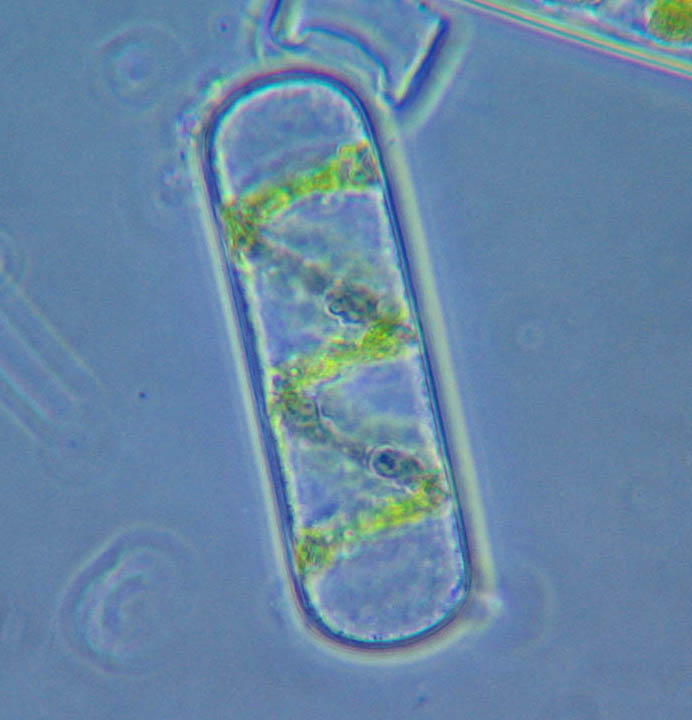- Zygnemataceae
name = Zygnemataceae
regnum =Plantae
divisio =Charophyta
ordo =Zygnematales
familia = Zygnemataceae
subdivision_ranks = Genera
subdivision = "Ancylonema "
"Cylindrocystis "
"Debarya "
"Entransia "
"Mesotaenium "
"Mougeotia "
"Mougeotiopsis "
"Netrium "
"Pleurodiscus "
"Roya "
"Sirogonium "
"Spirogyra "
"Tortitaenia "
"Zygnema "
"Zygogonium "
The Zygnematacae are a family offilament ous orunicellular , uniseriate (unbranched)green alga e. The filaments are septated and reproduction is byconjugation ; "Spirogyra " is commonly used in schools to demonstrate this kind of reproduction. The family is notable for its diversely shapedchloroplast s, such as stellate in "Zygnema", helical in "Spirogyra ", and flat in "Mougeotia". The Zygnemataceae are cosmopolitan, but though all generally occur in the same types of habitats, "Mougeotia", "Spirogyra", and "Zygnema" are by far the most common; in one study across North America (McCourt "et al.", 1986, as reported in Wehr, 2003, pg. 363), 95% of the Zygnemataceae collected were in these three genera. Classification and identification is primarily by the morphology of the conjugation, which is somewhat rare to find in natural populations of permanent water bodies; when in the vegetative state, the rarer genera resemble the three most common, and are often mistaken for them and catalogued as such. Conjugation can be induced in low-nitrogen culture.Wehr, John D. and Sheath, Robert G. "Freshwater Algae of North America", pg. 363.]While they occupy many habitats, in North America all are found solely in freshwater or
subaerial habitats. Species typically exist as floating mats in stagnant water in ditches and ponds, but some also grow in moving water, attaching themselves to a substrate by rhizoid-like projections of the basal cells of the filament. The mat species rise to the surface in early spring, grow rapidly through the summer, disappearing by late summer. Several genera appear to be endemic: "Entransia" is unique toNova Scotia , and "Pleurodiscus" toPuerto Rico ; "Mougeotiopsis" is known only from Michigan, Wisconsin, North Carolina and British Columbia. "Zygogonium" and the unicellular Zygnemataceae prefer acidic water, and "Ancylonema" and one species of "Mesotaenium" grow on glacial ice. Members of the Zygnemataceae, such as "Spirogyra", fall prey to parasites, especiallychytrid s.References
Wikimedia Foundation. 2010.

